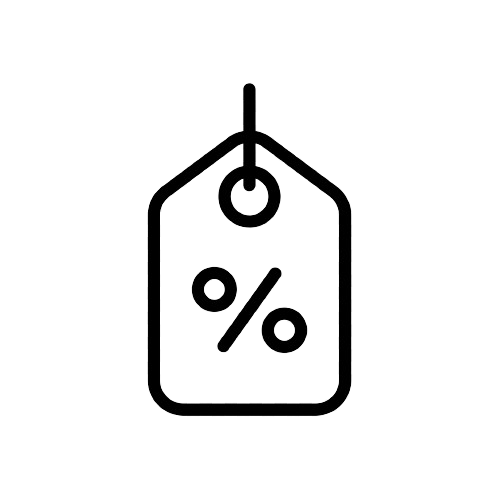Key Takeaways:
- Ancient Symbolism: Learn the origin of protection symbols and why they were vital in ancient cultures.
- Modern Relevance: Understand how protection symbols have evolved and their place in today’s spiritual practices.
- Empowering Talismans: Discover how these symbols are used in contemporary jewelry to offer aesthetic appeal and spiritual protection.
The power lies within you.
Civilizations have revered ancient protection symbols for thousands of years. They offer spiritual guidance and persist as living metaphors for personal safety and public empowerment.
At Awe Inspired, we celebrate these symbols and embody their spirit. Our carefully crafted talismans channel ancient wisdom into wearable art.
In this piece, we’ll explore the timeless significance of protection symbols and their modern relevance.
The Origins And Importance Of Ancient Protection Symbols
From the dawn of human civilization, protection symbols have played a significant role in bridging the physical and spiritual realms.
Origins Rooted In Early Human Societies
Protection symbols appeared amid the earliest human societies, where many lived in close connection with nature. The forces of nature were life-giving and dangerous, and humans sought to protect themselves from what they couldn't control. To achieve this, they created symbols believed to invoke the help of gods, spirits, animals, or cosmic forces.
Spiritual And Symbolic Connection
In ancient belief systems, protection symbols were viewed as spiritual conduits. Each symbol held a specific meaning, representing cosmic balance, harmony, or the struggle between good and evil. The symbols were often used in spiritual rituals to ward off evil or invite blessings. Whether engraved on amulets, painted on the walls of temples, or woven into clothing, such symbols acted as powerful reminders of the unseen forces governing the universe.
Transmission Across Generations
The meanings and significance of protection symbols were often passed down orally or through written texts, ensuring that their power and purpose remained intact over centuries. These symbols weren't static; they evolved with the societies that revered them, adapting to changing beliefs while retaining their protective essence. This transmission helped ancient cultures stay connected to their ancestors' wisdom, allowing future generations to harness the power of these symbols in times of need. It was through this careful preservation that protection symbols maintained their relevance across vast expanses of time.
Lasting Legacy And Modern Relevance
Even today, many ancient protection symbols continue to hold significant cultural value. They have transcended their original societies and have been reinterpreted by modern cultures. Their timeless appeal lies in their ability to communicate universal concepts of protection, harmony, and spiritual balance. In many ways, these symbols are as relevant today as they were in ancient times, continuing to serve as powerful emblems of humanity's enduring desire for security and peace.
Common Ancient Protection Symbols And Their Meanings
Throughout history, many protection symbols have gained widespread recognition for their mystical and protective properties. Here are a few of the most prominent ancient protection symbols:
- The Eye of Horus (Egyptian): Also known as the “Wadjet,” this symbol was believed to offer protection, health, and rejuvenation. The ancient Egyptians considered it a powerful emblem against evil forces, often used in amulets and sacred carvings.
- The Hamsa (Middle Eastern): A hand-shaped symbol with an eye in the center, the Hamsa is thought to ward off the “evil eye” and bring blessings, luck, and protection. It is widely used in Jewish, Islamic, and other Middle Eastern cultures.
- The Ankh (Egyptian): Representing eternal life, the ankh also symbolized protection in ancient Egypt. Its cross-like form with a loop at the top was often used in rituals and worn as a protective charm.
- The Triquetra (Celtic): This interwoven three-part symbol is believed to represent the interconnectedness of mind, body, and spirit. It is often associated with protection, particularly in matters of the heart and personal relationships.
- Pentagram (Various Cultures): The five-pointed star within a circle is known for its use in various spiritual traditions, from ancient Babylonian cultures to modern Wicca. It represents balance and protection against evil influences.
The Evolution Of Protection Symbols Over Time
Protection symbols have been constantly present in human history, evolving alongside the societies that revered them. Initially, these symbols were deeply tied to spiritual or religious practices, serving as powerful tools to guard against both physical and metaphysical threats.
However, as civilizations grew and interacted through trade, migration, and cultural exchange, the meanings and uses of these symbols expanded. Over time, protection symbols transformed, adapting to new beliefs, changing societal needs, and even modern psychological and spiritual practices. Their evolution reflects humanity's shifting relationship with the unknown, the divine, and the self.
Cultural Exchange And The Spread Of Symbols
As ancient civilizations traded goods and ideas, protection symbols began to cross geographic and cultural boundaries, taking on new meanings in the process. One of the most notable examples is the Hamsa, a hand-shaped symbol originally rooted in Middle Eastern and North African traditions.
Through trade routes and migration, the Hamsa spread to Europe and beyond, where it was adopted by different cultures and religions. Its meaning shifted from a local symbol of divine protection to a universal emblem of good fortune and protection against evil. This exchange of symbols highlights how interconnected ancient cultures became over time, allowing protection symbols to become shared across continents.
Merging Of Old And New Belief Systems
The rise of new religions and evolving belief systems often led to the reinterpretation or merging of ancient protection symbols. For instance, the pentagram, an important protective symbol in early pagan traditions, later became associated with Christianity, symbolizing the five wounds of Christ.
This kind of syncretism, where older symbols were absorbed and redefined by new faiths, was common as societies transitioned from polytheistic to monotheistic religions. Ancient protection symbols did not disappear with the rise of new religions; instead, they were often adapted to fit new spiritual frameworks, ensuring their continued relevance in changing religious landscapes.
Adapting To Societal Changes
As human societies became more complex and stable, the focus of protection symbols shifted in response to new challenges. In early civilizations, many symbols were primarily focused on physical protection, such as safeguarding individuals from enemies or natural disasters.
Over time, as the immediate physical threats lessened with the development of cities and organized states, the emphasis of these symbols evolved. In many cultures, protection symbols began to address inner concerns, such as emotional well-being, personal peace, and spiritual balance. This shift illustrates how societies moved from fearing external dangers to focusing on internal and psychological harmony, with symbols evolving to meet these changing needs.
Modern Interpretations Of Protection Symbols
In modern times, protection symbols continue to play a significant role in many spiritual practices, although their interpretations have evolved. Today, these symbols are often viewed through a more personal and psychological lens, representing protection from negative energy, emotional turmoil, and inner conflict rather than solely physical threats.
- Spiritual And Mindfulness Practices: Symbols like the Hamsa, pentagram, and Ankh are now often used in spiritual practices like meditation, yoga, and Reiki. Practitioners believe these symbols can help channel positive energy, promoting healing and creating a peaceful atmosphere.
- Personal Empowerment: Many people wear protection symbols as jewelry or tattoos as a form of personal empowerment, believing the symbol will guide them, bring luck, or keep them safe in challenging situations. The Triquetra, for example, is now frequently associated with personal growth and harmony in relationships.
- Art and Fashion: In modern culture, protection symbols are often incorporated into art and fashion to express individuality or spirituality. Designs featuring the Eye of Horus or the Hamsa can be seen on clothing, accessories, and home decor, representing not just protection but also cultural heritage and connection to ancient traditions.
Final Thoughts
Protection symbols, with their deep roots in ancient cultures, have shown an enduring relevance that transcends time and geography. While their meanings have evolved, their core purpose—to shield, protect, and bring positive energy—remains intact. Today, these symbols are embraced not only for their historical significance but also for the sense of personal empowerment and spiritual connection they provide.
Their presence in both ancient and modern contexts highlights their universal appeal, reminding humanity that it has always sought ways to feel safe and secure in an uncertain world. As these symbols continue to evolve, they will likely remain a vital part of spiritual and cultural practices for generations to come.
Read also:
- Jewelry Trends To Look Out For In 2024
- Pride Jewelry: Celebrating Achilles, Greek Mythology's Greatest Warrior
- Gold Plating Vs Gold Vermeil: How Are They Different?
Frequently Asked Questions About Protection Symbols
What are protection symbols?
Protection symbols are visual representations used in ancient cultures to guard against evil, bring good fortune, or provide spiritual protection. These symbols carry deep meanings and are often used in modern jewelry, rituals, and art.
Why were protection symbols important in ancient cultures?
In ancient times, protection symbols were believed to connect the physical and spiritual realms, offering safety from harm, illness, and misfortune. They were deeply embedded in religious and cultural practices.
Are protection symbols still relevant today?
Yes! Protection symbols have evolved but remain relevant in modern spirituality, fashion, and mindfulness practices. Many people wear them as jewelry or keep them in their homes for a sense of peace and safety.
What is the difference between protection symbols and amulets?
Protection symbols are visual designs with meaning, while amulets are objects often containing these symbols. Amulets can be worn or carried as a physical representation of the symbol’s protective power.
What are some examples of common protection symbols?
Popular protection symbols include the Eye of Horus, the Hamsa, the Ankh, the Triquetra, and the Pentagram. Each has its own cultural and spiritual significance.
Can protection symbols be combined with modern spiritual practices?
Absolutely. Many contemporary spiritual practices, such as meditation, Reiki, and Wicca, incorporate protection symbols as tools for grounding, healing, and channeling positive energy.
How can I use protection symbols in my daily life?
You can wear protection symbols as jewelry, place them in your home for a positive atmosphere, or use them in personal rituals to enhance spiritual protection and mindfulness.
Do protection symbols only work if you believe in them?
While belief in their power can enhance the experience, many people find value in protection symbols through cultural heritage, aesthetics, or as a source of inspiration, even without a strong spiritual belief.
What is the most powerful protection symbol?
The “most powerful” symbol depends on cultural beliefs. For instance, the Eye of Horus is highly revered in Egyptian mythology, while the Hamsa is widely used in Middle Eastern cultures for protection against the evil eye.
Where can I find modern versions of protection symbols?
Awe Inspired offers a curated collection of protection symbols crafted into fine jewelry designed to empower and protect. Each piece carries both ancient meaning and modern relevance.















